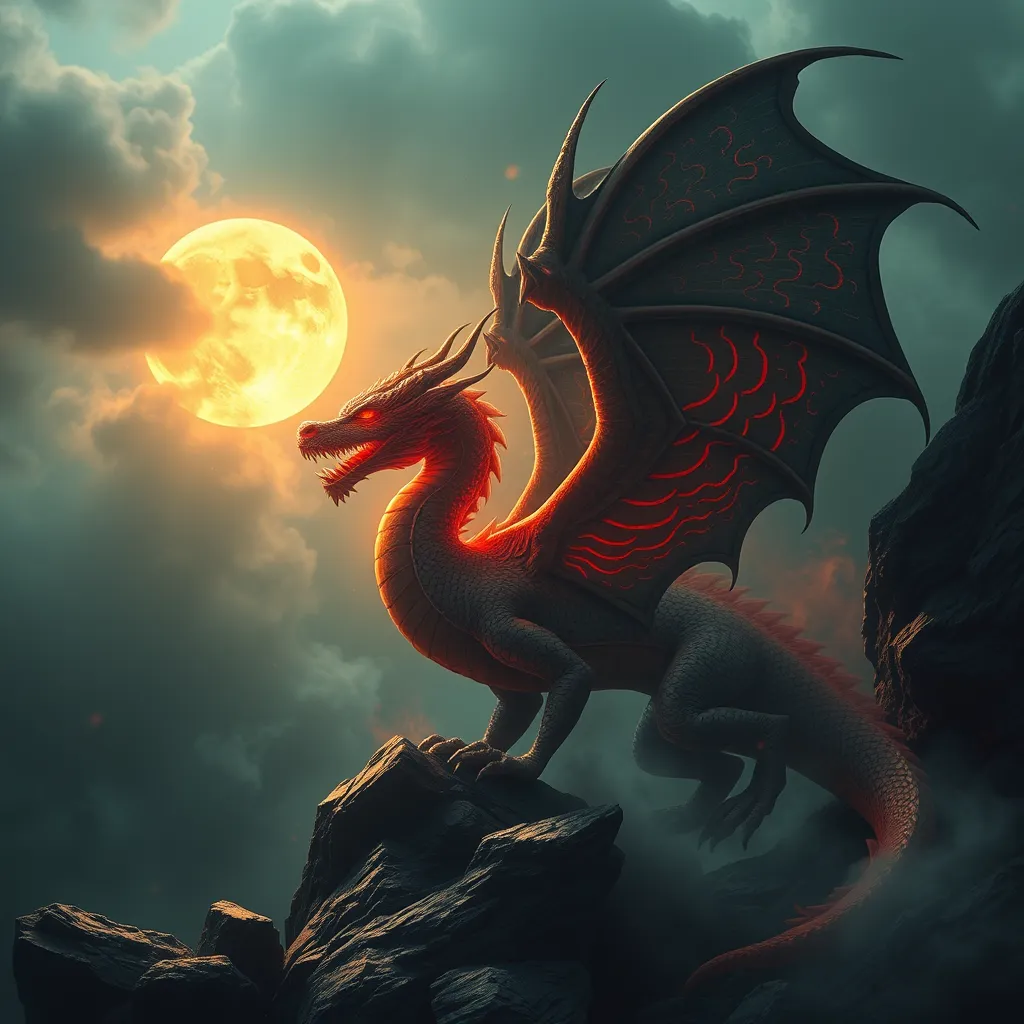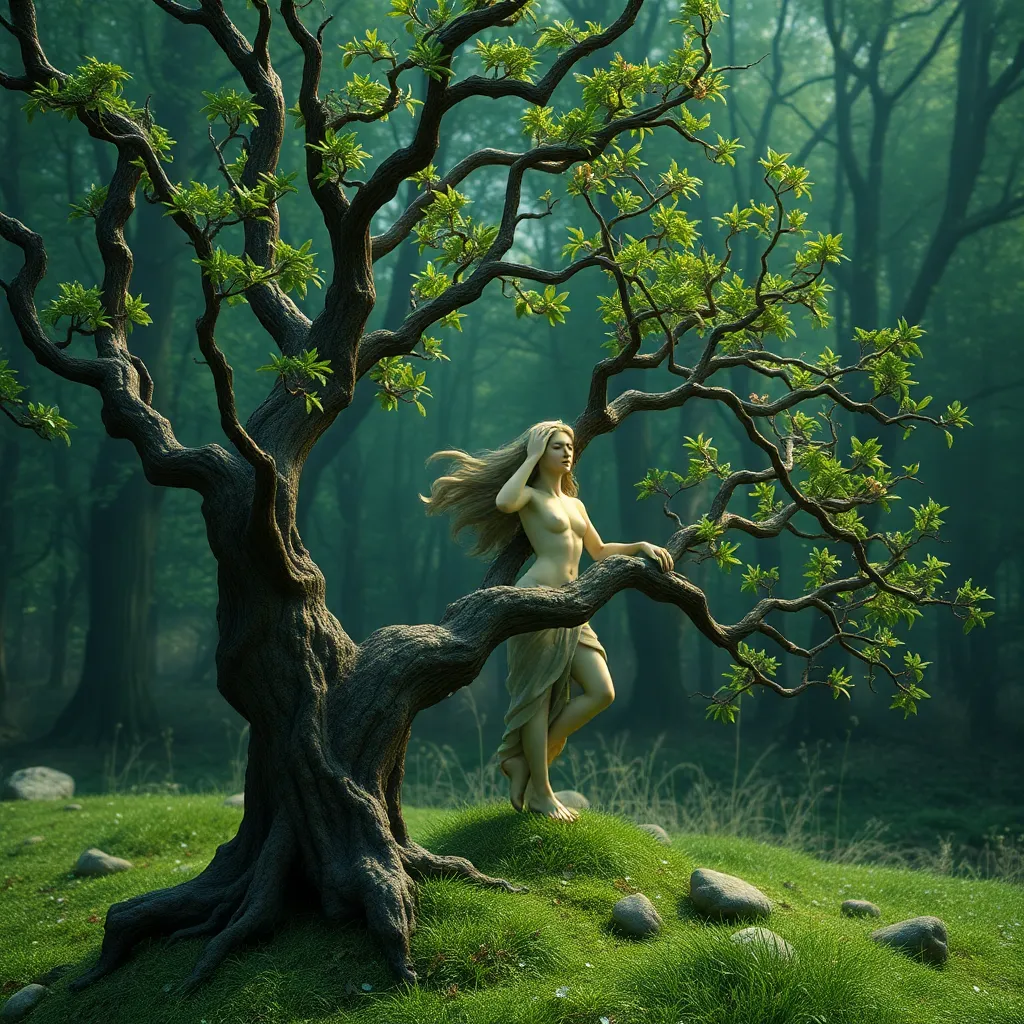The Dragon’s Voice: Analyzing the Symbolism and Metaphors Found in Dragon Mythology
I. Introduction
Throughout history, dragons have captivated the human imagination across various cultures. From the fierce, fire-breathing beasts of Western legends to the wise, benevolent serpents of Eastern traditions, the mythology of dragons is rich and diverse. These creatures are more than just mythical beasts; they serve as powerful symbols and metaphors that help us understand complex themes, from the nature of power to the balance of chaos and order.
This article aims to delve into the cultural significance, symbolism, and metaphors associated with dragons. By examining their roles across different societies, we can uncover the deeper meanings behind these legendary creatures and explore their enduring presence in both ancient and modern narratives.
II. The Cultural Significance of Dragons
Dragons hold a unique place in both Eastern and Western mythologies, often embodying vastly different traits and themes.
A. Dragons in Eastern vs. Western mythology
In Eastern cultures, particularly in China, dragons are revered as symbols of power, good fortune, and nobility. They are often associated with water and agriculture, believed to bring rain and prosperity. Conversely, in Western mythology, dragons are frequently depicted as malevolent creatures that hoard treasure and threaten humanity, representing chaos and destruction.
B. Common themes and differing interpretations
- Power and Authority: While Eastern dragons symbolize benevolence and protection, Western dragons often embody tyranny and oppression.
- Morality: Dragons in Western tales are often defeated by heroes, symbolizing the triumph of good over evil, while Eastern dragons may teach lessons of humility and respect.
C. The role of dragons in folklore and storytelling
Dragons have been integral to folklore and storytelling across cultures, serving as both antagonists and allies. Their presence in stories often reflects societal values and human experiences, making them timeless figures in literature and art.
III. Dragons as Symbols of Power and Strength
Dragons are powerful symbols of strength and authority, representing various aspects of dominance and protection.
A. Representation of authority and dominance
In many cultures, dragons symbolize the ultimate power, often associated with rulers and dynasties. Their formidable presence inspires both fear and respect, making them ideal symbols of authority.
B. Dragons in royal iconography and heraldry
Dragons have been used in heraldry to signify nobility and strength. For example, the Welsh dragon, prominently featured on the national flag of Wales, represents the nation’s pride and heritage.
C. The duality of strength: protector vs. destroyer
While dragons can embody destruction and chaos, they are also seen as guardians and protectors. This duality highlights the complexity of power—strength can be wielded for both creation and destruction.
IV. The Metaphorical Connection to Nature
Dragons are often depicted as embodiments of natural forces, linking them to the elements and the balance of nature.
A. Dragons as representations of natural forces
Many cultures view dragons as manifestations of elemental powers. They are not merely creatures of fantasy but are deeply intertwined with the natural world.
B. The link between dragons and elemental powers (fire, water, earth, air)
- Fire: Often associated with Western dragons, fire symbolizes destruction but also transformation.
- Water: Eastern dragons are frequently linked to rain and rivers, representing fertility and life.
- Earth: Dragons are seen as guardians of the earth, connecting them to the land and its resources.
- Air: Their ability to fly symbolizes freedom and the transcendence of earthly limitations.
C. Dragons as symbols of chaos and balance in nature
Dragons exemplify the chaotic forces of nature, yet they also embody the necessary balance that sustains life. Their existence reminds us of the delicate interplay between destruction and creation.
V. The Psychological Dimensions of Dragon Symbolism
Dragons also serve as powerful psychological symbols, representing deep-seated fears and aspirations within the human psyche.
A. Dragons as archetypes in the human psyche
In Jungian psychology, dragons can be seen as archetypes representing the shadow self—the darker aspects of our personality that we must confront and integrate.
B. The dragon as a representation of fears and inner demons
Encounters with dragons in myths often symbolize the struggle against one’s fears, challenges, and inner demons, highlighting personal growth through confrontation.
C. Transformation and personal growth through dragon encounters
Slaying a dragon is often a metaphor for overcoming obstacles and achieving personal transformation. The journey to face the dragon reflects the hero’s path toward self-discovery and empowerment.
VI. The Role of Dragons in Moral and Ethical Lessons
Dragons frequently serve as moral lessons in folklore, representing challenges that must be overcome for personal and societal growth.
A. Dragons as antagonists in moral tales
In many stories, dragons are depicted as foes that heroes must defeat to restore order and justice, symbolizing the struggle against evil and corruption.
B. Heroism and the quest for identity in dragon slaying
The act of slaying a dragon is often a rite of passage for heroes, symbolizing the quest for identity, courage, and the triumph of good over evil.
C. Embracing the dragon: the importance of understanding and coexistence
Modern interpretations suggest that instead of battling dragons, we should seek to understand and coexist with them, reflecting a shift in moral perspectives toward acceptance and empathy.
VII. Modern Interpretations of Dragon Mythology
In contemporary literature, film, and art, dragons continue to evolve, reflecting changing societal values and cultural relevance.
A. Dragons in contemporary literature, film, and art
From J.R.R. Tolkien’s Smaug to the dragons of “Game of Thrones,” modern narratives often portray dragons with complex personalities, blurring the lines between good and evil.
B. Evolving symbolism and cultural relevance
The symbolism of dragons has shifted, representing not only fear and destruction but also wisdom, resilience, and the power of nature.
C. The resurgence of dragon narratives in popular culture
With the rise of fantasy genres in movies and literature, dragons have regained prominence, captivating new generations and inspiring fresh interpretations of their mythos.
VIII. Conclusion
In conclusion, dragons are multifaceted symbols that embody power, nature, and the human experience. Their rich mythology offers profound insights into our fears, aspirations, and the ethical dilemmas we face. As we continue to explore and reinterpret these legendary creatures, we uncover the timeless lessons they impart.
The enduring legacy of dragon mythology in society reflects our fascination with these mythical beings, reminding us of the complex interplay between chaos and order, fear and courage, and destruction and creation. Understanding dragons enriches our cultural narratives and deepens our connection to the universal themes they represent.



